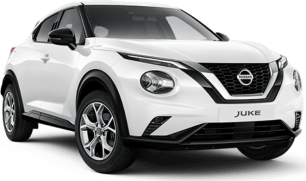The three-tier range starts at $28,190, before on-road costs, for the Captur Life and comes with 17-inch wheels, a cloth interior, auto headlights, air-conditioning, Apple CarPlay and Android Auto on the 7.0-inch landscape-oriented touchscreen, full LED headlights (that’s a nice touch), front and rear parking sensors, a reversing camera and a space saver spare.
Irritatingly, if you want the extra safety that's standard on the Zen and Intens, you have to spend another $1000 on the 'Peace of Mind' package, which also adds electric folding mirrors and takes you to $29,190, $1600 short of the Zen which has all this and more.
So think carefully about a Life with a package. I would put a modest sum of money on the idea that few people will buy the Life.
Step up to the Zen and for $30,790 you get the extra safety gear, walk-away auto-locking, a heated leather steering wheel, auto wipers, two-tone paint option, climate control, keyless entry and start (with the Renault key card) and wireless phone charging.
Then there's a big jump to the Intens, a whole five grand to $35,790. You get 18-inch wheels, a bigger 9.3-inch touchscreen in portrait mode, sat nav, BOSE sound system, 7.0-inch digital dashboard display, LED interior lighting, 360-degree cameras and leather seats.
The 'Easy Life' package is available on the Intens and adds auto parking, side parking sensors, auto high beam, a bigger 10.25-inch digital dash and frameless rear vision mirror for $2000.
And you can get the 'Orange Signature' package for no bucks. Which adds orange stuff to the interior and deletes the leather, which isn't necessarily a terrible thing. Not because the leather is bad, I just prefer cloth.
The new Renault touchscreens are good and include Apple CarPlay and Android Auto, but I can only speak for the bigger 9.3-inch system which is similar to the Megane's.
You get digital radio on top of AM/FM radio and six speakers (Life, Zen) or nine speakers (Intens).
These prices are more competitive than the older car. That seems fair because there's a lot more in it and prices are inexorably creeping northwards at the other brands.
Missing out of the range is the plug-in hybrid version, which is sad for a couple of reasons.
The first is that first-mover advantage could work in Renault's favour and secondly, its French rival Peugeot is pricing its new 2008 way higher than the Captur, so a PHEV could almost be cheaper - one imagines - than a top-spec, petrol-only 2008.
Perhaps Renault is going to wait and see what happens when Alliance partner Mitsubishi drops the Eclipse Cross PHEV, which I think will do quite well.
















































 copy.png)




.png)








